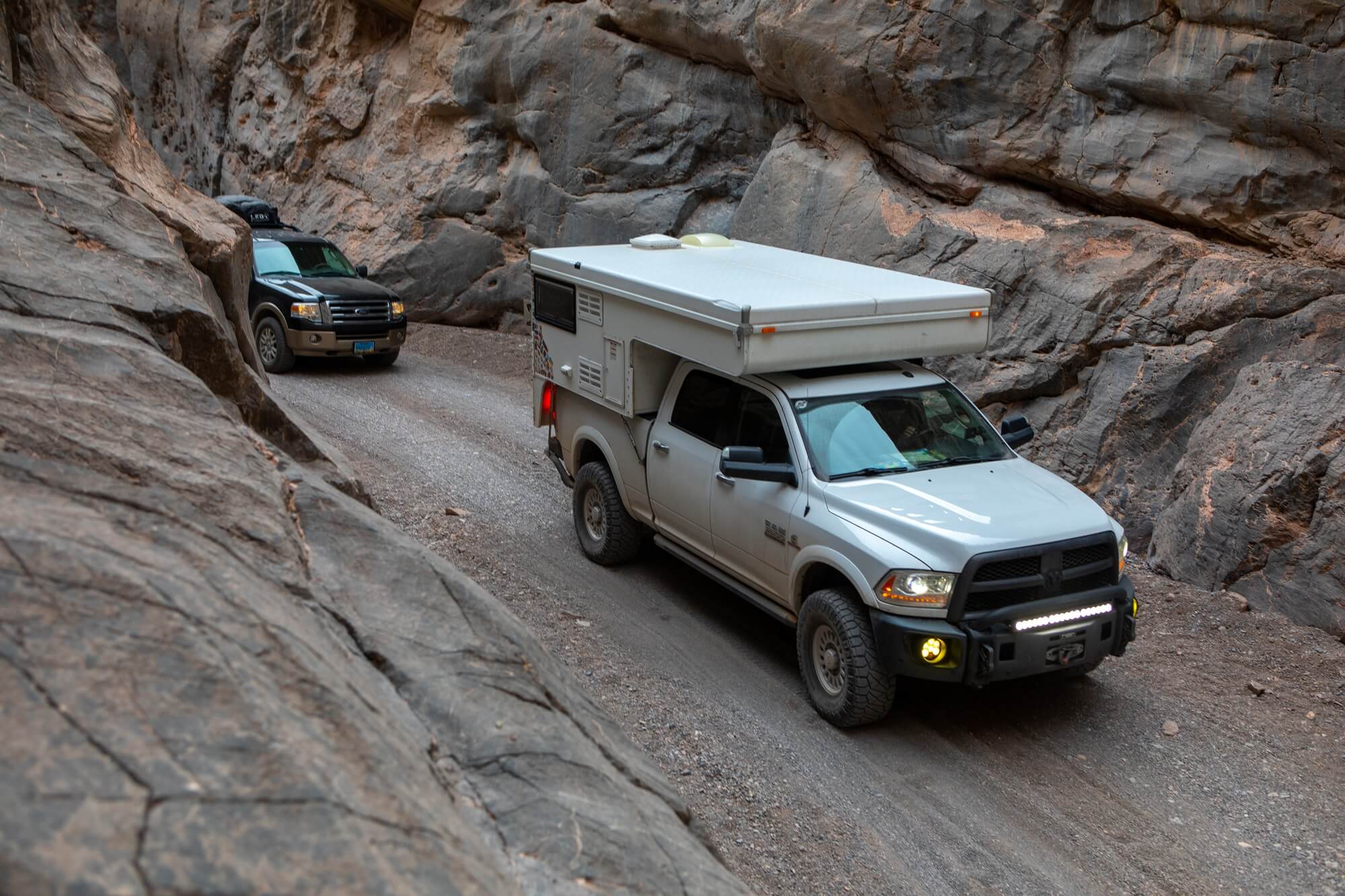
Photography by Harry Wagner
We are often drawn to difficult terrain to challenge our vehicles and our driving skills, but there are plenty of other draws to spending time on the trail. Titus Canyon in Death Valley National Park might not have many obstacles requiring low range, but it does offer spectacular scenery, interesting geology, and mining history. Titus Canyon is on the eastern side of the park and is one of the most popular trails in the area for the wide variety of people and interests it appeals to. The start of the trail where you turn off the pavement is well marked, and also has signage stating that no camping is permitted along Titus Canyon Road.

The town of Beatty is the eastern entrance point to Death Valley and the nearest fuel stop to Titus Canyon. If you have a sweet tooth, you will definitely want to stop at Giggle Springs and check out their enormous candy selection when you fuel up.
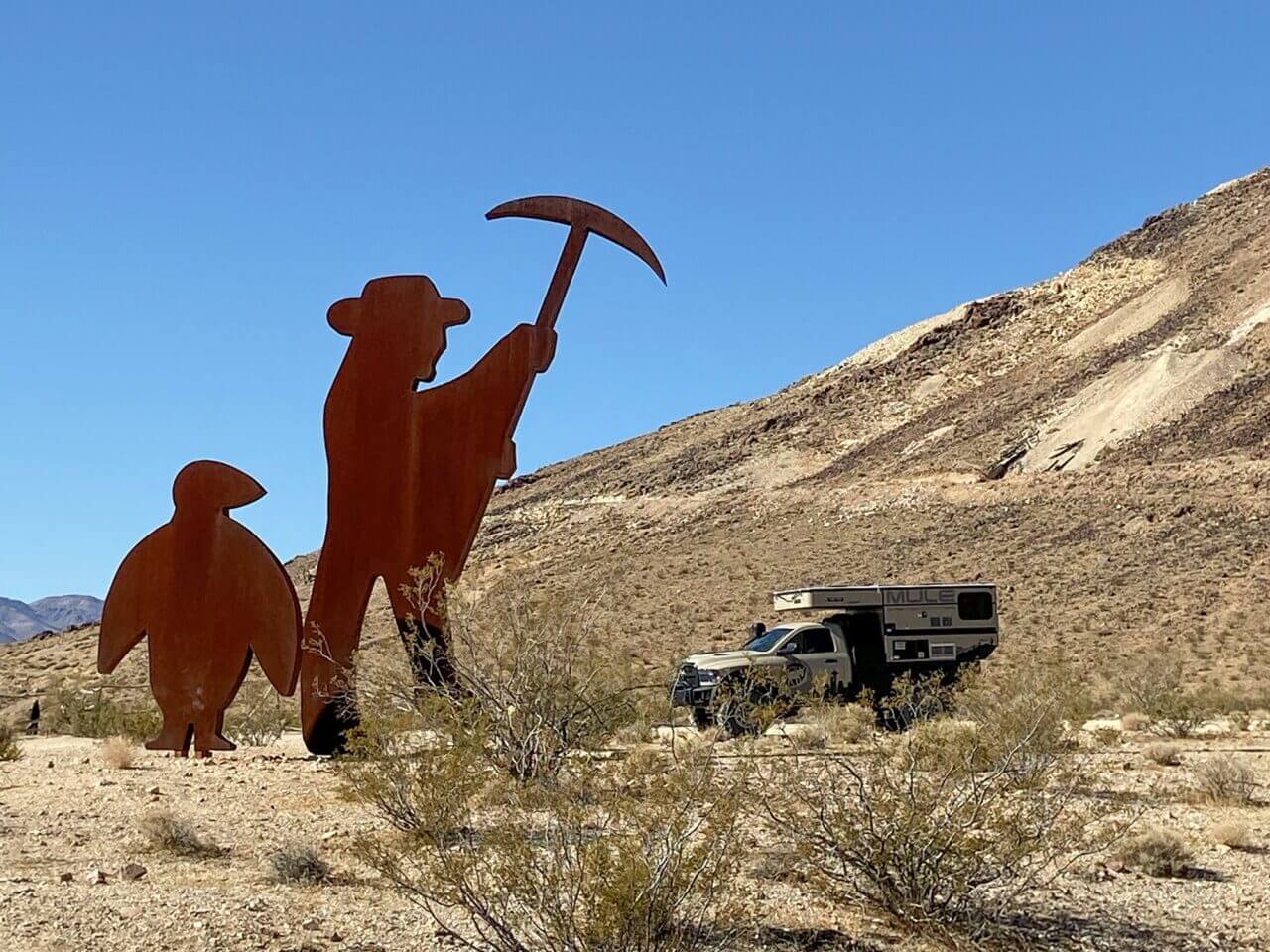
It is worth making a stop at the ghost town of Rhyolite on your way to Titus Canyon. In 1984, Belgian artist Albert Szukalski created his sculpture The Last Supper on Golden Street near the Rhyolite railway depot. The art became part of the Goldwell Open Air Museum, an outdoor sculpture park near the southern entrance to the ghost town.
The trail starts innocently enough, with nine miles of graded dirt roads that are relatively flat. Don’t be lulled into complacency though, you want to ensure that your vehicle is in good mechanical condition and you have plenty of water before departing. Titus Canyon takes its name from Morris Titus, a miner who perished in this area over a century ago in 1906, and cell service in the canyon was just as good then as it is now (it doesn’t exist). Along the side of the road, keep an eye out for ephedra, also known as Mormon Tea. This was a popular herb for the indigenous people who inhabited this area prior to the influx of settlers.
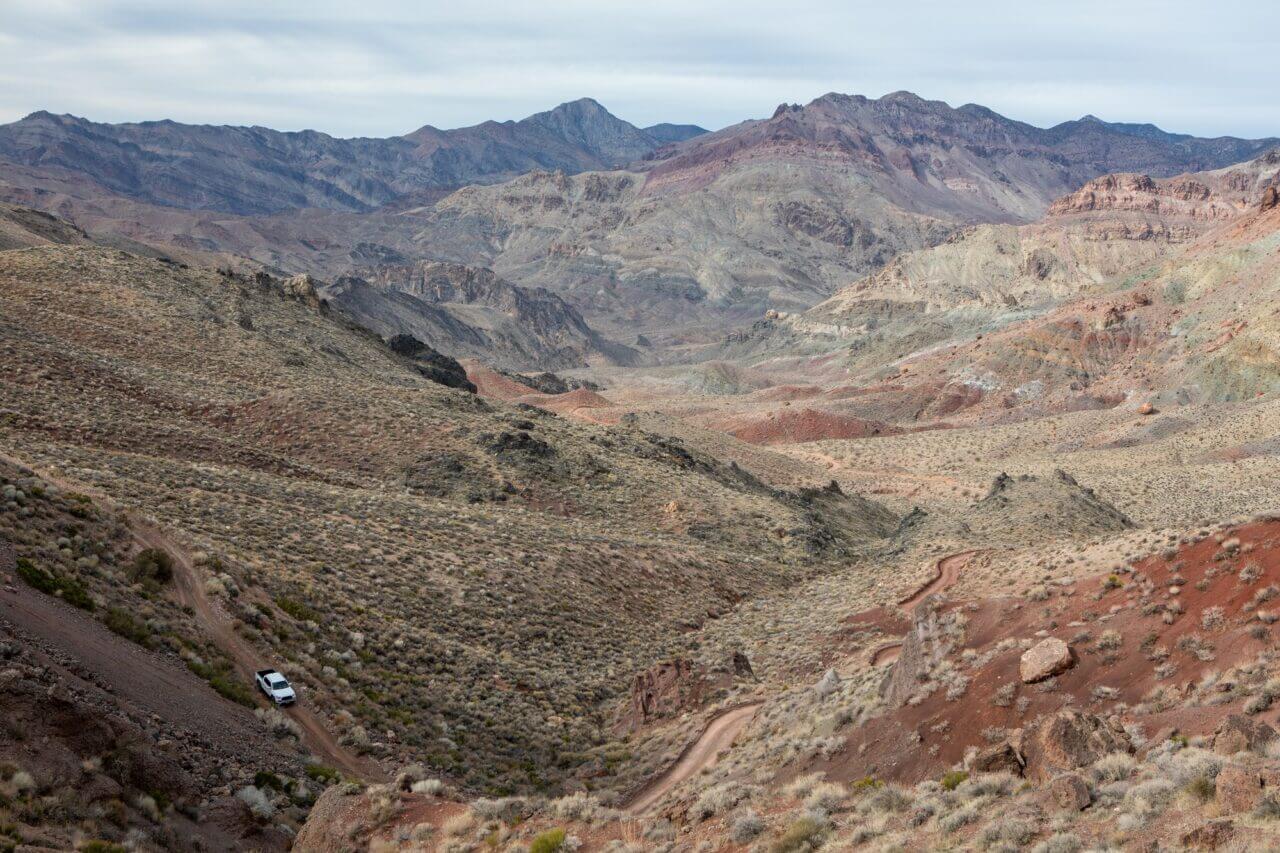
While there are no challenging obstacles, low range is helpful here for the extra gear reduction to keep your brakes cool. Rock hounds will enjoy the colors of the volcanic rocks and sedimentary layers found in the White and Red Mountains as you work your way through the switchbacks before descending to Leadville.
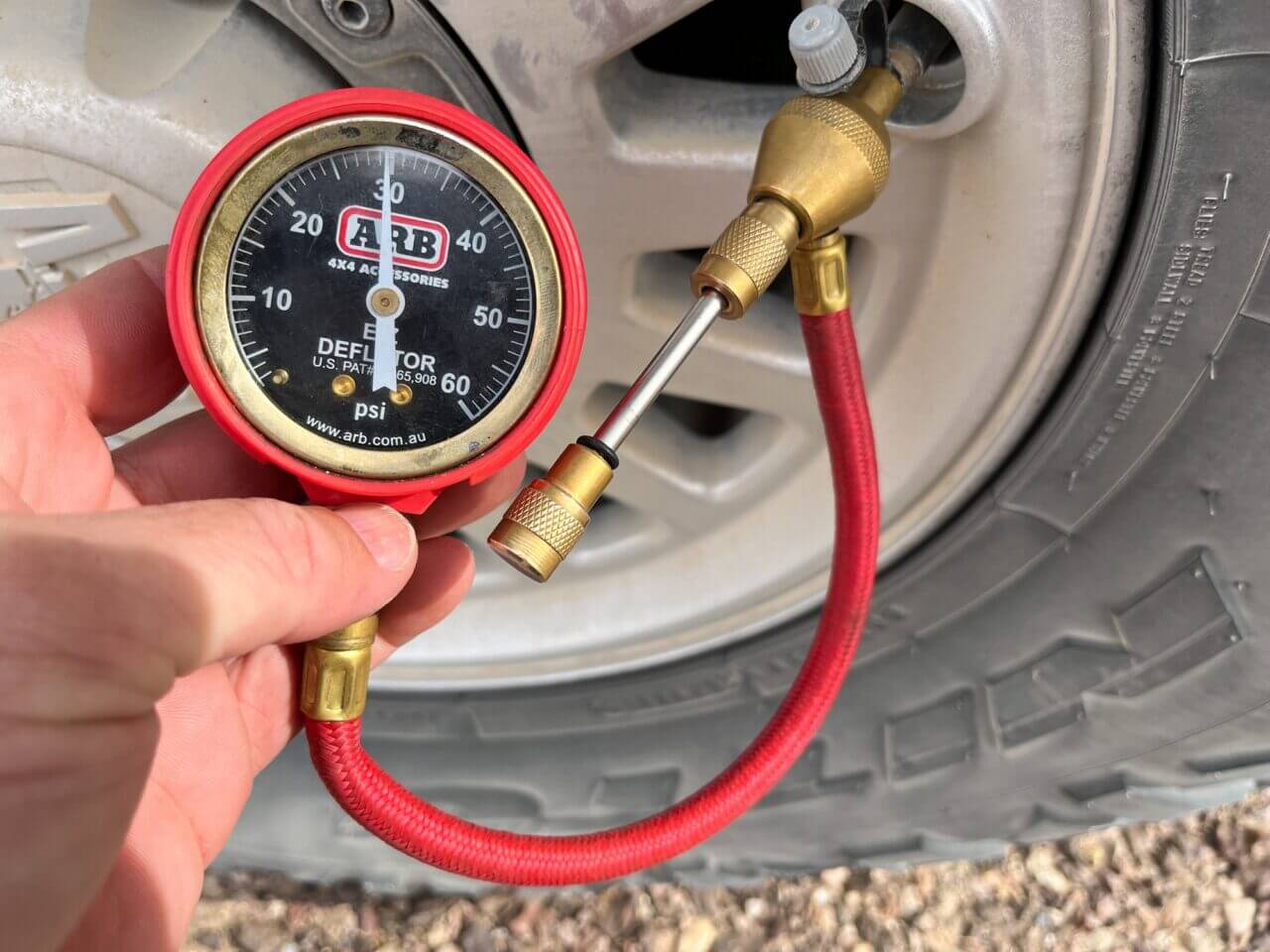
The roads leading to Titus Canyon contain nine miles of washboard. We recommend lowering your air pressure to help the tires conform to the terrain and smooth out the ride. Our ARB EZ-Deflator made quick work of this process, is reasonably priced, and simple to use.
After leaving the valley floor you climb to 5,100 feet at White Pass, down 500 feet into the next valley, and up to 5,200 feet to Red Pass before descending to Leadville. Leadville could be considered the poster child for the Roaring Twenties. Within the span of twelve months in 1925 the desolate area went from nothing to a functioning town and back to nothing based on speculation and marketing of the lead prospects in the area. Remains of the post office, café, and a general store still remain and are worth exploring before continuing into the canyon.
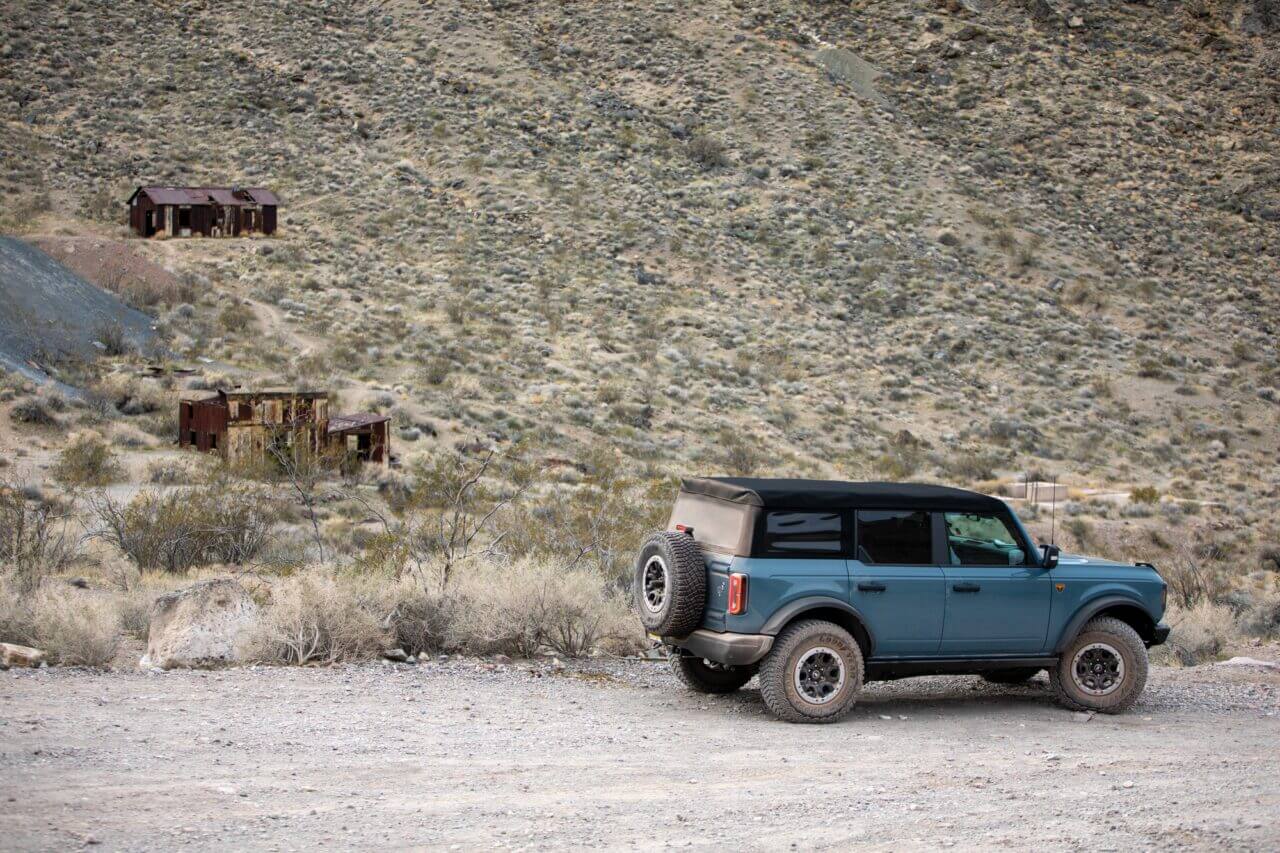
Leadville was one of many towns built on false claims during the Roaring Twenties. Charles Julian made wild claims that resulted in Leadville booming in 1926, complete with train service and their own newspaper. But less than a year later the town was abandoned when the mineral claims never materialized.
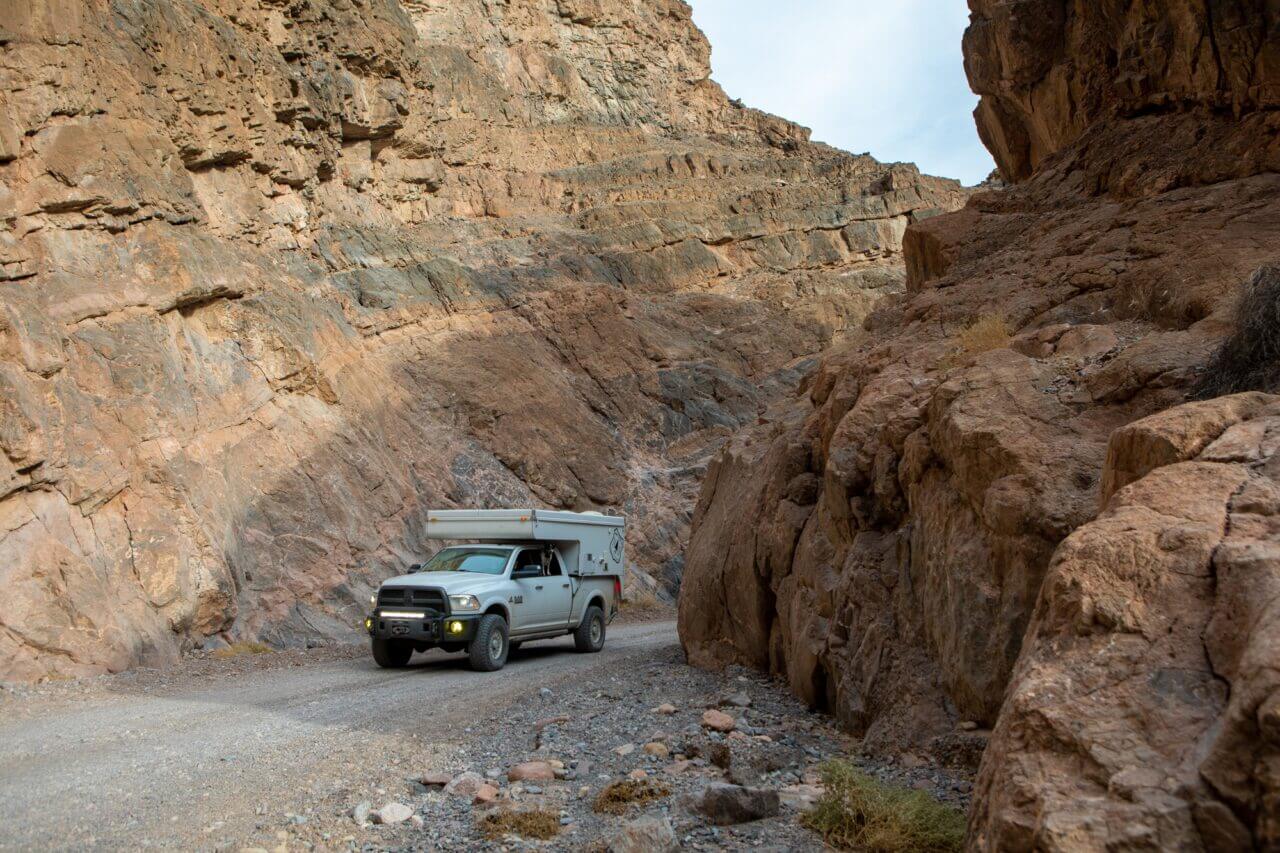
Titus Canyon isn’t the place you want to be during a flash flood! Check the weather before starting the trail, and don’t be surprised if it is closed by the park service in the case of inclimate weather. In addition to flooding, snow over White Pass or Red Pass will often result in the trail being temporarily closed.
All of the wide-open spaces are left behind at this point as you descend into Titus Canyon proper. Two and half miles below Leadville you encounter Klare Spring. While the spring may be underwhelming, it is the only water source for miles in any direction. Indigenous people used to source water here and left their mark, with petroglyphs dotting the rocks all around the spring. The volcanic rocks give way to much older sedimentary layers with walls that have been polished smooth from flash flooding. The trail gets continuously narrower, but was still wide enough for our fullsize truck and slide in camper. The tight nature of Titus Canyon mean that it is only open one-way to vehicle traffic, but you will likely see hikers going up the canyon so watch your speed. Exiting the canyon is dramatic and provides wide, sweeping views of Death Valley. There is an outhouse here and a parking lot that makes a great location to air up your tires and decide if you want to turn north to Ubehebe Crater and Teakettle Junction or south towards Stovepipe Wells and Badwater. There are no wrong answers here, as Death Valley offers plenty of scenery and history, if not challenges, in every direction.
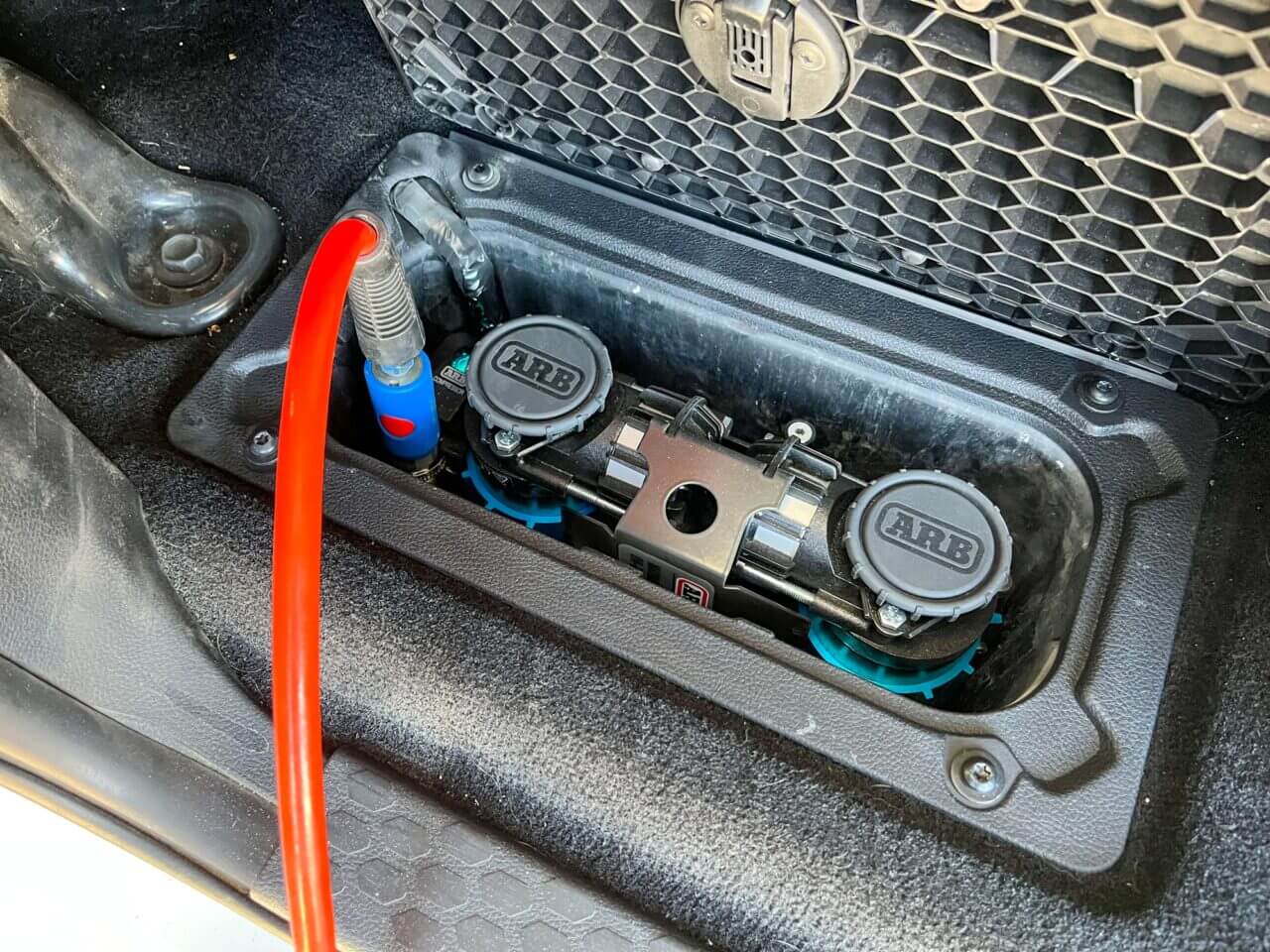
Once returning to pavement we aired our tires back up with our ARB Twin Air compressor. This setup fits nicely in the footwell in the back of our Ram and has a 100% duty cycle. The compressor flows 4.68 cfm at 29 psi, filling our Nitto Ridge Grapplers quickly.















2